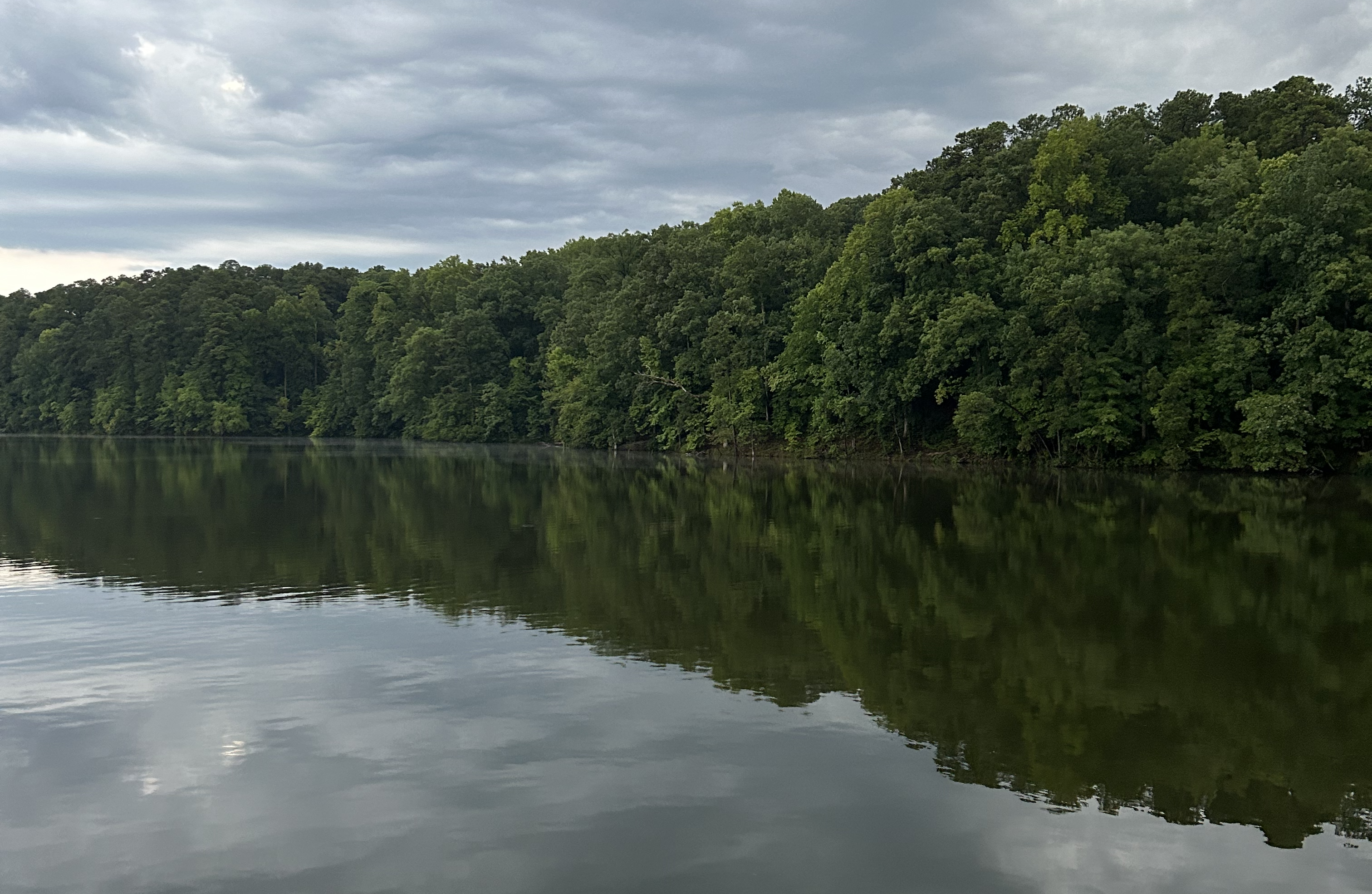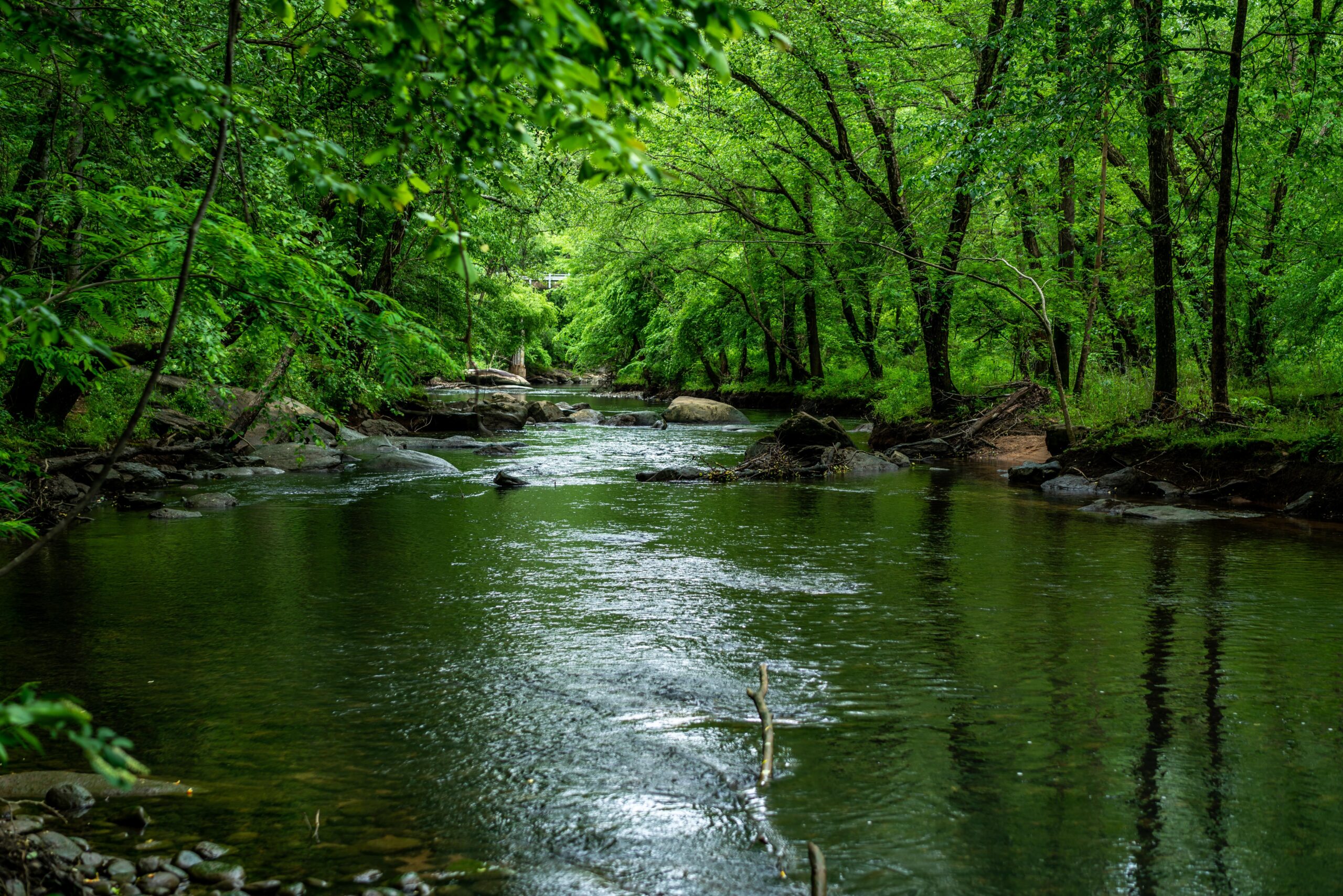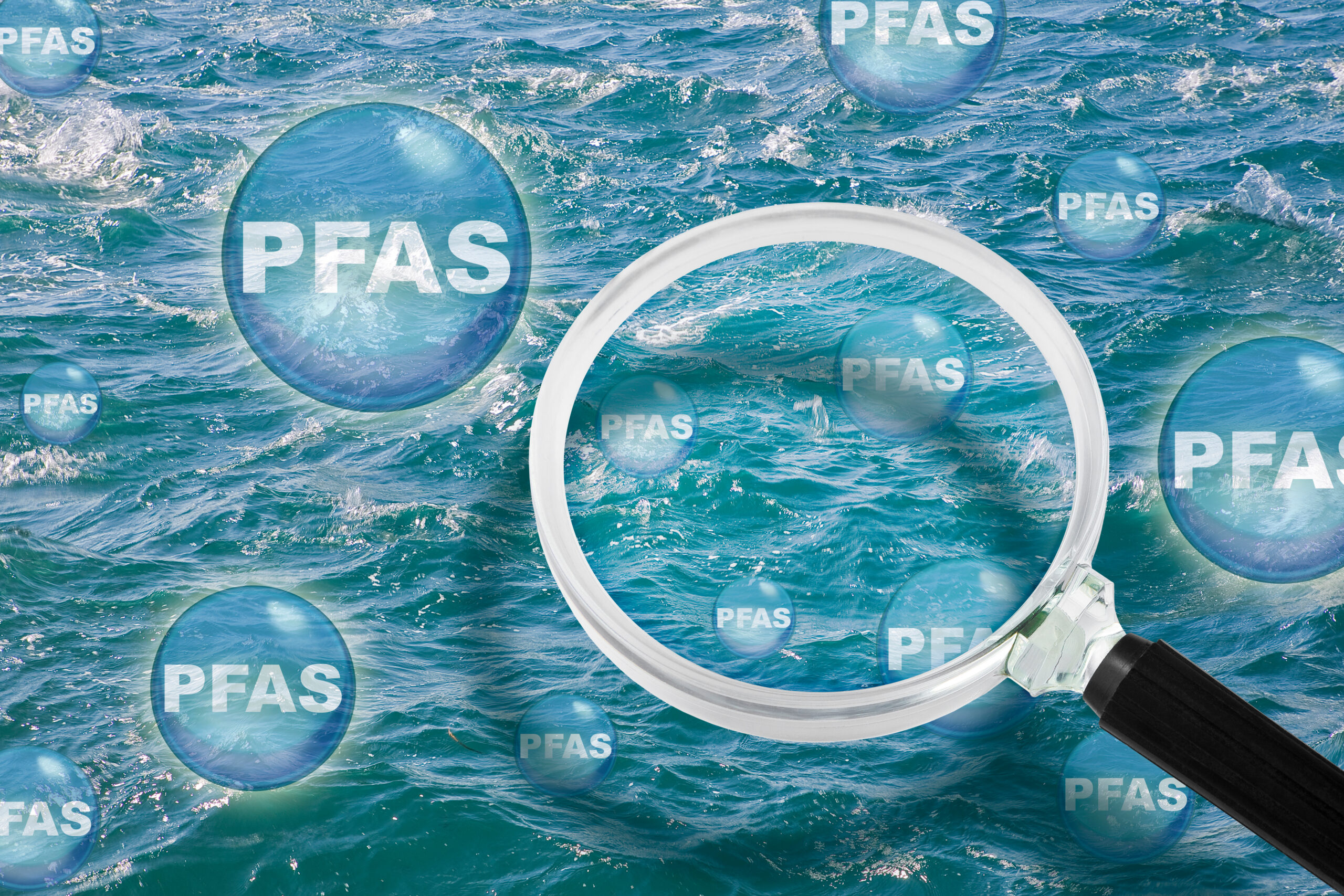Mussel Mania
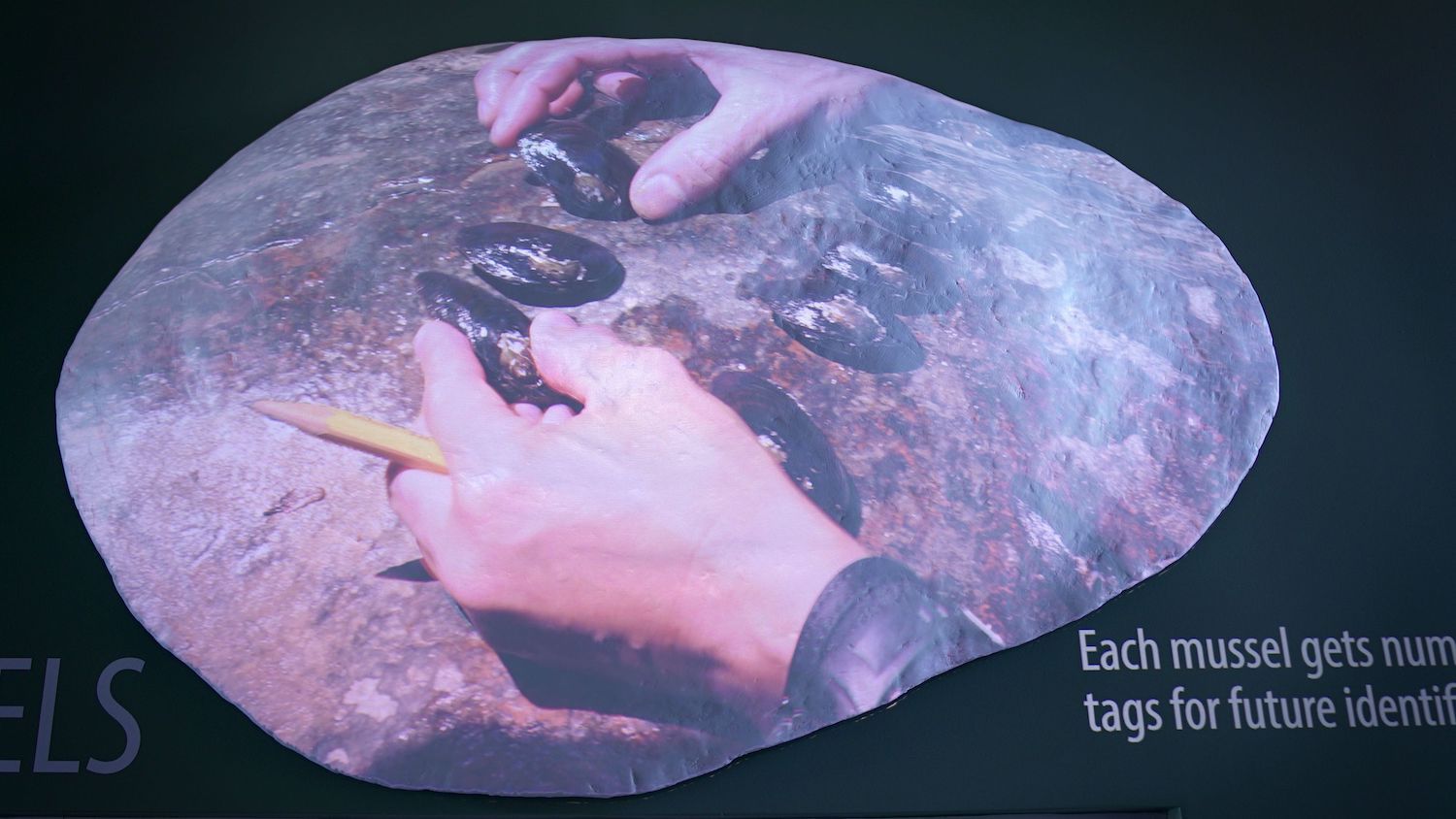
Greensboro Science Center’s new exhibit features footage of North Carolina’s freshwater mussels.
What has no eyes, fits in the palm of your hand, and has a foot that looks like a tongue?
If you said a freshwater mussel, then you guessed the species at the center of the newest Greensboro Science Center (GSC) exhibit.
“People are surprised by just how little they actually know about mussels,” says Lindsey Zarecky, GSC’s vice president of conservation and research.
The permanent exhibit features endangered freshwater mussels found in North Carolina. Located in the Conservation Center, visitors experience an immersive 3D projection map to learn about these tiny creatures with a big impact on the state’s waterways.
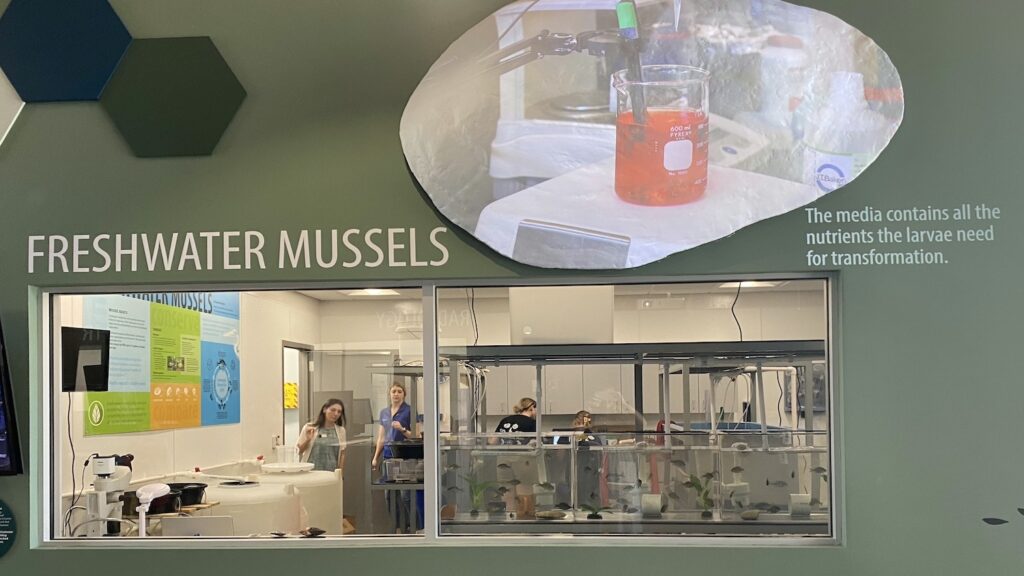
Averaging just under 5 inches in size, freshwater mussels help to create clean water in streams just by living in them — thus biologists see these mussels as bioindicators of water health. No mussels present in a waterway typically means dirty water.
However, out of the 300 species of freshwater mussels living in the United States, 75% of them are classified as imperiled. That means that without conservation efforts, three quarters of the taxa is set to go extinct. Zarecky wants to share that message with GSC audiences.
“People like the direct tie to an animal that cleans water— as another animal that likes to consume water.”
The Process
To develop the exhibit, Zarecky applied for the Community Collaboration Research Grant provided by the Water Resources Research Institute (WRRI), North Carolina Sea Grant and the Kenan Jr. Institute for Engineering, Technology and Science (KIETS).
CCRG projects require partners, and thus Zarecky collaborated with NC Wildlife Resources Commission’s Rachael Hoch. Together they determined spreading awareness of the large environmental role freshwater mussels play would be a key goal of the exhibit.
“I love that you get to see these imperiled species up close and personal,” Hoch says. “Freshwater mussels are often cryptic, you [usually] have to put on a snorkel and get wet to see them. But at the Greensboro Science Center, you get to see these species up close and personal, and see every part of their unique lifecycle.”
Hoch explains that habitat loss due to poor water quality and an increase in sedimentation is to blame for mussel imperilment. To combat these factors, labs and hatcheries have been utilizing a catch, breed, and release protocol to strengthen the number of freshwater mussels in North Carolina.
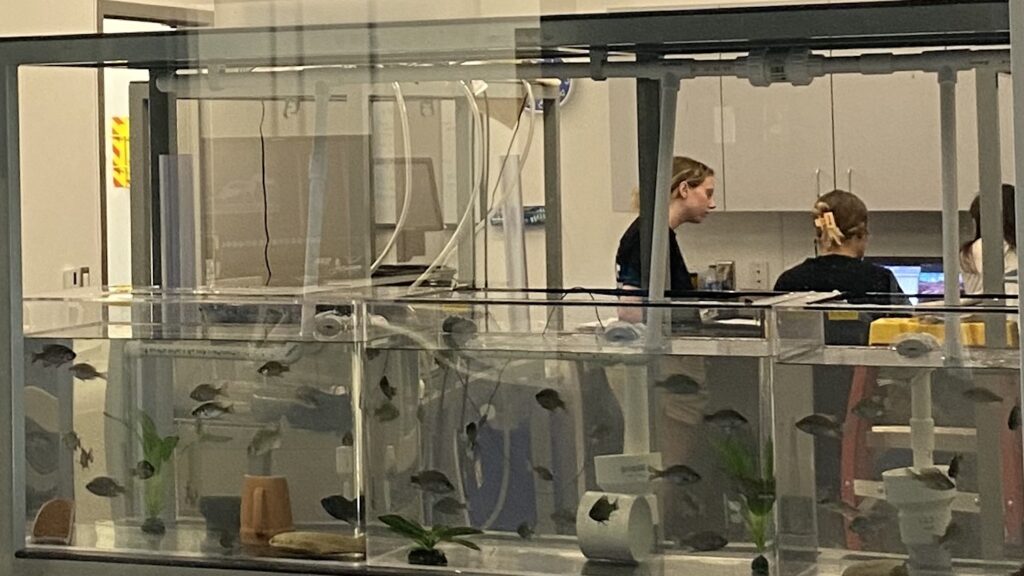
Zarecky and Hoch chose Hannah Sprague, then a media studies student at University of North Carolina Greensboro, to capture this process and create the digital content for the exhibit over a one-year period. Sprague was not familiar with freshwater mussels prior to joining the project, but found the lengths biologists go to prevent taxa extinction compelling.
“This project definitely challenged me in how to use my skills to capture the most effective footage for telling the story of freshwater mussels,” says Sprague. “It was really fun to use my skills with videography to enter the STEM world.”
Cars loaded with cameras and wet gear, Zarecky and Hoch’s team criss-crossed the state to record the conservation efforts that have been made to reverse the damage done to the mussel population.
“My favorite part was going out to multiple locations to film,” says Sprague. “I traveled to Marion, Raleigh, and the Uwharries to capture the different ways biologists in this state really care for mussels and are trying to prevent extinction.”
A typical day during the project involved crafting storyboards, preparing the mussels to be photographed on-site, and conducting mussel surveys in streams. Hoch explains that she had to learn to sit in front of a green screen in order to create some of the videos that would project behind her. The team says they filmed quite a few blooper reels.
“It was a really wonderful experience and I learned a lot in the process,” Hoch says of working on the videos.
Community Collaboration
Back at the museum, Sprague’s documentary-style work is projected onto a three-dimensional model of a mussel shell that is affixed above the window to view an active lab. Visitors come face-to-face with the two species of live mussels and one species of fish tended by researchers working in the on-site aquaculture facility.
Zarecky acknowledges that engaging and interactive museum exhibits can help to generate public interest in environmental causes.
“We realized if we can draw people in by something that’s really interesting-looking, once we have them, then we can educate them. We wanted to do something that was captivating for a species that might not be the most captivating animal we have on property,” she says.
Hoch agrees, noting that much of the work conservationists do is acting as champions for “underdog” species — and community partnerships are integral to the success of conservation efforts.
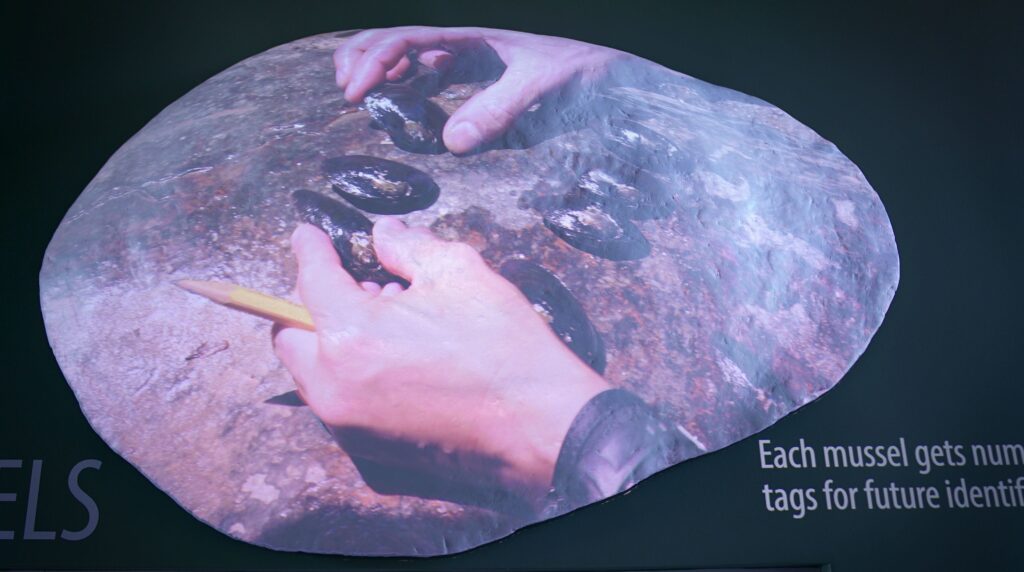
“We are not going to be able to conserve these imperiled species if we don’t all work together as a community to achieve common goals. Having North Carolinians as stakeholders in conservation is imperative for us to be able to actually make meaningful change,” she says.
Since its opening, the exhibit has been successful in captivating museum guests. About 70% of visitors stop to engage with the mussels, fish, and researchers visible in the viewing window.
“Because we are literally on display, it is so ingrained in who we are to incorporate the public in everything we do,” Zarecky says. “Whether it’s a large, charismatic, flashy animal or something like a freshwater mussel, everything is in need of respect and preservation. So, I like to drag the public along in that initiative and spark that passion to think about decisions they make that make
the overall impact better.”
Going Forward
The next steps for Zarecky’s team include working with University of North Carolina Greensboro research students again to further gauge public interaction with the exhibit.
“We want to know what the conversation is. Do parents start it, do kids start it?” asks Zarecky. “We want to make sure that our message and the way we present it is something that the public is going to gravitate towards. What are we doing, is it working, and if not, what changes should we make?”
WRRI Deputy Director John Fear is pleased with the research and resulting exhibit. “It is projects like this that truly characterize the Community Collaborative Research Grant; bringing science and technology out of the lab and into the public sphere to be enjoyed by everyone.”
The freshwater mussel exhibit is open to the public at the Greensboro Science Center everyday from 9 a.m. to 5 p.m. For more information, visit greensborosciencecenter.wordpress.com/tag/mussels/
- Categories:
